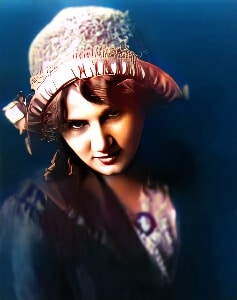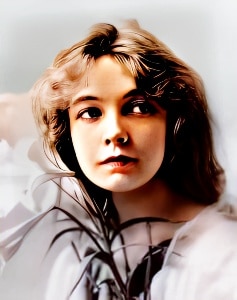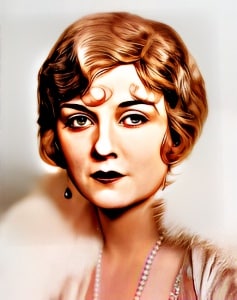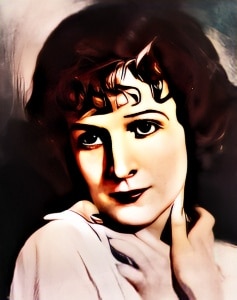 Florence Lawrence, born on January 2, 1886, in Hamilton, Ontario, Canada, was a pioneering figure in the early days of American cinema.
Florence Lawrence, born on January 2, 1886, in Hamilton, Ontario, Canada, was a pioneering figure in the early days of American cinema.
She was a versatile actress who made significant contributions to the development of the film industry during the silent film era. While her name may not be as widely recognized today as some of the leading stars of her time, her work and innovations in the film industry have left a lasting impact.
Florence Lawrence’s journey into the world of entertainment began in her teenage years when she started working as a stage actress. Her transition to film came in the early 1900s when she joined the Vitagraph Studios, marking the start of her career in silent cinema. At that time, silent films relied heavily on visual storytelling, making it essential for actors to convey emotions and narratives primarily through facial expressions and physical movements.
One of Florence Lawrence’s significant contributions to cinema was her pioneering work as one of the first recognizable movie stars. In the early 1900s, most film studios did not credit their actors, but Lawrence broke this tradition. She was one of the first actors to receive on-screen credit for her work, and she actively promoted her films and built a public image, making her one of the earliest film celebrities.
Lawrence’s popularity grew rapidly, and she became known as “The Biograph Girl” during her time at Biograph Studios. Her charismatic presence on screen and her ability to connect with the audience contributed to her rise as a silent film icon.
Florence Lawrence also made significant advancements in film technology. She is credited with inventing the first turn signal for automobiles, a vital safety feature that is still in use today. This innovation showcased her ingenuity beyond acting and established her as a creative and resourceful individual.
In the film industry, Lawrence worked with some of the early film pioneers, including directors like D.W. Griffith. She appeared in numerous films, including “The Automobile Thieves” (1906), “The Policeman’s Little Run” (1907), and “ The Country Doctor”, where her talent for capturing the audience’s attention shone through.
Lawrence’s career continued to evolve as she transitioned to other studios, and she maintained her status as a leading lady of silent cinema. She played diverse roles in a range of films, from dramas to comedies, and established herself as a versatile actress. Her ability to adapt to different genres and characters contributed to her enduring popularity.
The transition to sound films in the late 1920s marked a significant challenge for many silent film actors, including Florence Lawrence. Unfortunately, her career in sound films was brief, and she retired from acting, living a private life.
In conclusion, Florence Lawrence was a trailblazer in the early years of American cinema. Her innovation in film technology, her pioneering status as one of the first recognizable movie stars, and her ability to connect with audiences through her performances all contributed to her lasting legacy. While her career in sound films was relatively short, her influence on the silent film era remains a vital part of the history of cinema. Florence Lawrence’s contributions enriched the art of filmmaking, and she remains an important figure in the annals of early Hollywood.




